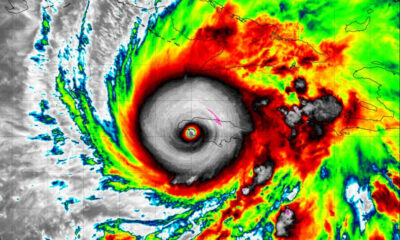Reviews
Workplace Violence 5x More Likely in the Healthcare Industry Since the Pandemic

Since the onset of the COVID-19 pandemic, healthcare professionals have experienced a dramatic surge in workplace violence, significantly outpacing rates seen in other industries. This troubling trend has severe financial implications, such as escalating healthcare costs, while contributing to increased anxiety, depression, and burnout among medical personnel.
A recent healthcare workplace violence study conducted by Seth Bader of Bader Law sheds light on this escalating issue, drawing attention to both the emotional and financial ramifications faced by healthcare workers.
The findings reveal a deeply concerning reality:
In the second quarter of 2022 alone, over 5,200 nursing staff were victims of workplace assaults, averaging roughly 57 assaults every single day. This startling frequency indicates how vulnerable those serving on the frontline of healthcare are.
Moreover, the broader scope of workplace harassment has doubled in prevalence within the healthcare sector. Reports of harassment among healthcare workers increased dramatically from just 6% in 2018 to an alarming 13% in 2022. This significant spike reflects a rapidly deteriorating work environment, likely influenced by the stresses of pandemic conditions, increased patient frustration, and strained healthcare resources.
Perhaps most disturbingly, the overall number of nonfatal intentional injuries sustained by healthcare practitioners and technical staff reached a staggering 8,590 incidents in 2022. Healthcare workers now disproportionately shoulder nearly half of all reported nonfatal workplace violence injuries, despite representing just 10% of the entire workforce.
Seth Bader emphasized the gravity of these findings, noting, “The data from this study underscores the urgent need for healthcare institutions to address the rampant violence against their workers. With healthcare professionals making up only 10% of the workforce but experiencing 48% of nonfatal injuries due to workplace violence, the financial and emotional toll is staggering.”
Emotional Impact on Healthcare Workers
The implications extend far beyond physical injuries. Heightened violence and harassment within healthcare facilities fuel anxiety and depression among employees, which compounds existing burnout and contributes to workforce shortages. The emotional strain experienced by healthcare workers inevitably affects their ability to deliver quality patient care, thus exacerbating a vicious cycle of stress and dissatisfaction.
Financial repercussions are also escalating. Healthcare providers face rising costs associated with bolstering security measures designed to protect employees from physical assaults and verbal abuse. The industry has seen a notable surge in expenditures on protective measures, security personnel, and safety training programs.
Simultaneously, the frequency of workplace violence incidents has sparked a significant increase in workers’ compensation claims, consequently driving up premium costs for healthcare employers. The specter of costly litigation further adds to the economic burden, as facilities must grapple with potential lawsuits stemming from insufficient protective measures or workplace violence incidents.
Legislative Actions and Protections
Acknowledging the severity of this issue, legislators at both state and federal levels have begun taking decisive action. Many states have already enacted stringent laws aimed at protecting healthcare workers from assault, implementing tougher penalties for perpetrators of violence in healthcare settings.
On the federal front, legislators are actively pursuing enhanced protections. Two pivotal bills currently await advancement in committee stages. These bills propose severe penalties for individuals convicted of assaulting healthcare workers, with sentences potentially extending to 20 years. Such legislative efforts will likely send a clear message about the serious repercussions of assaulting healthcare professionals, ideally deterring future incidents.
Addressing workplace violence in healthcare requires a multifaceted approach, combining stringent legislation, increased institutional support, comprehensive staff training, and enhanced security measures. With these concerted efforts, healthcare institutions can strive to create safer, more supportive environments, ensuring that those dedicated to caring for others can perform their critical duties without fear for their personal safety.

-

 World5 days ago
World5 days agoEthiopian volcano erupts for first time in thousands of years
-

 Legal2 days ago
Legal2 days agoUtah Amber Alert: Jessika Francisco abducted by sex offender in Ogden
-

 Legal1 week ago
Legal1 week agoWoman in critical condition after being set on fire on Chicago train
-

 US News1 day ago
US News1 day agoExplosion destroys home in Oakland, Maine; at least 1 injured
-

 World1 week ago
World1 week agoHurricane Melissa registered 252 mph wind gust, breaking global record
-

 Legal1 week ago
Legal1 week agoSuspect in San Diego stabbing shot by authorities after fleeing into Mexico
-

 Legal1 week ago
Legal1 week ago1 dead, 2 injured in shooting at Dallas Walmart parking lot
-

 Health2 days ago
Health2 days agoMexico’s September human bird flu case confirmed as H5N2



